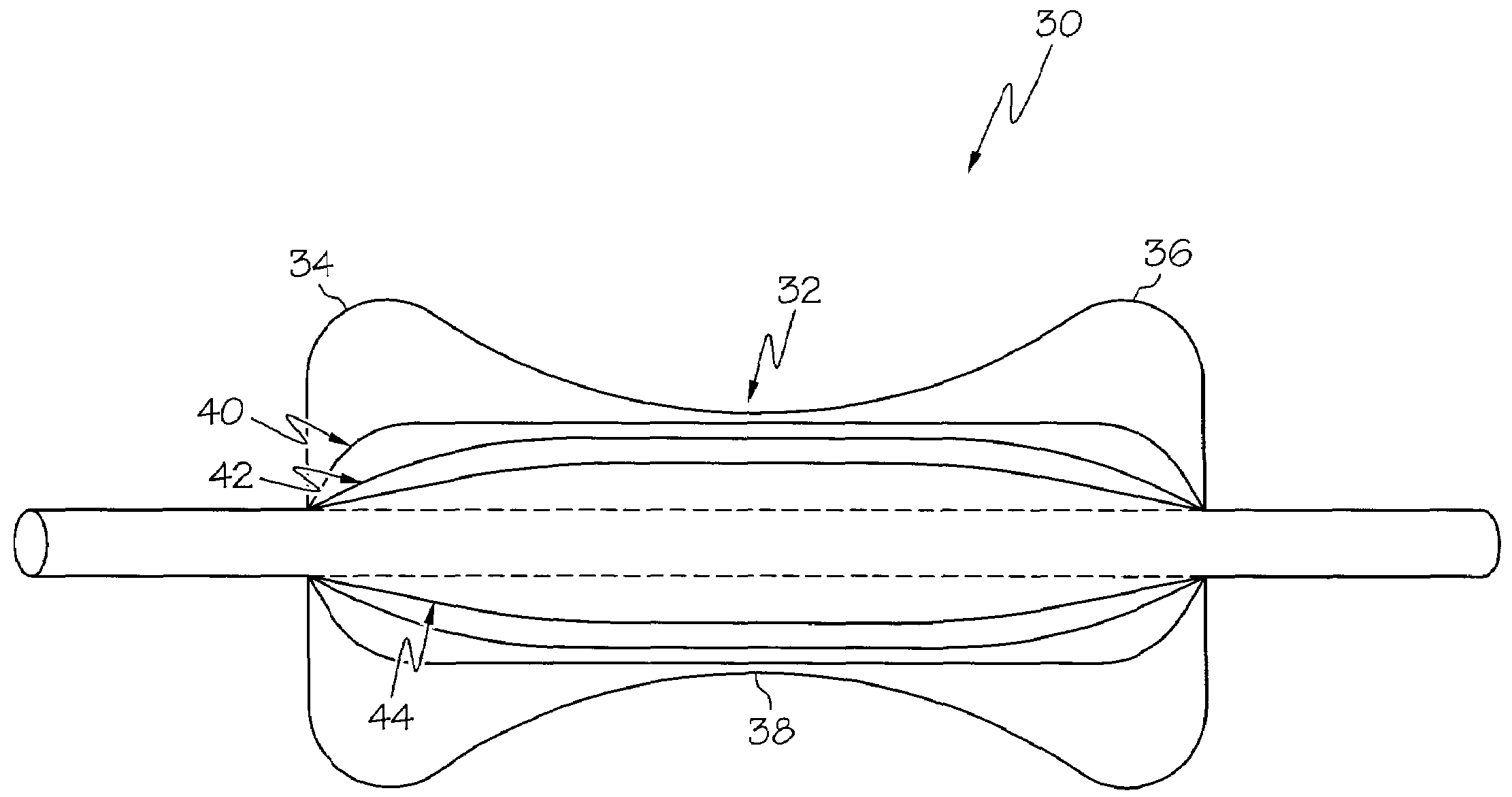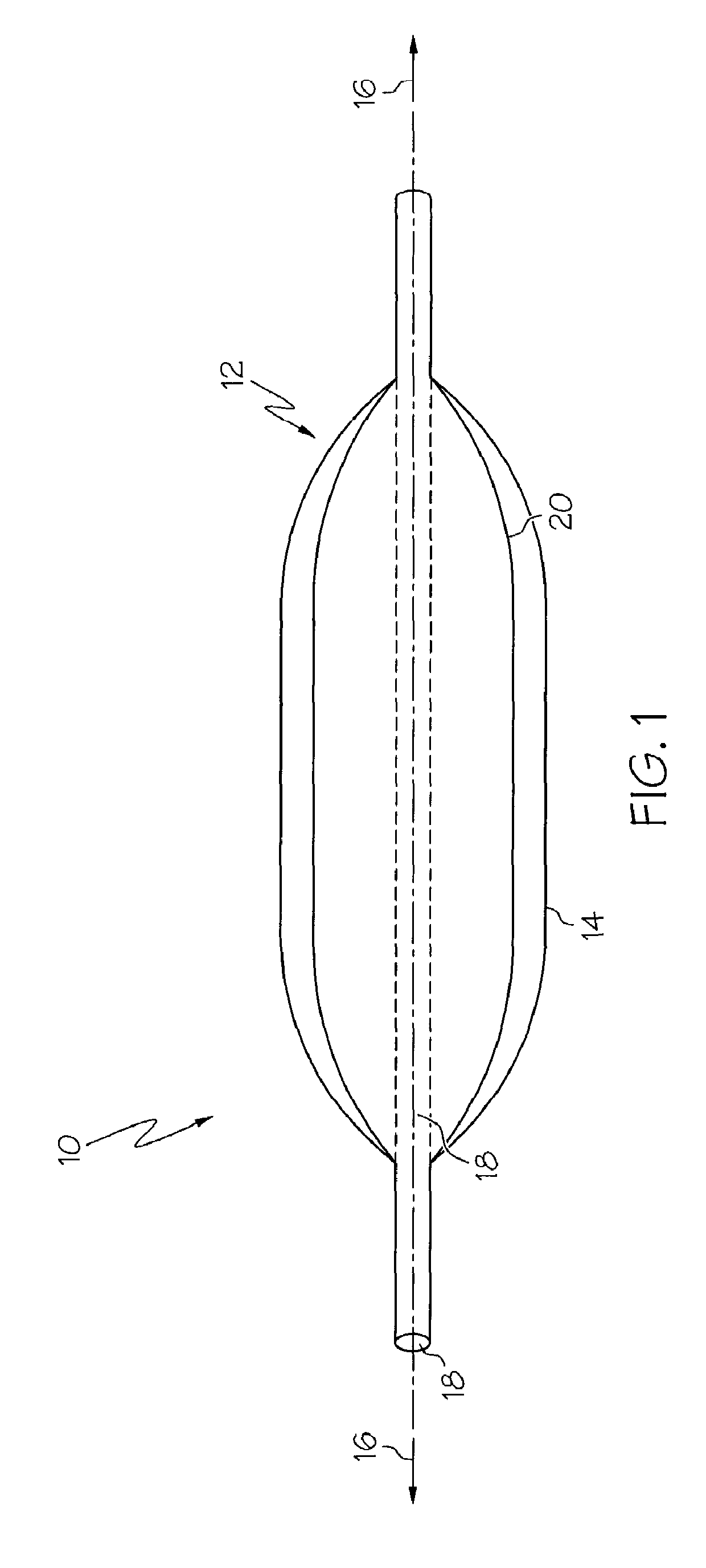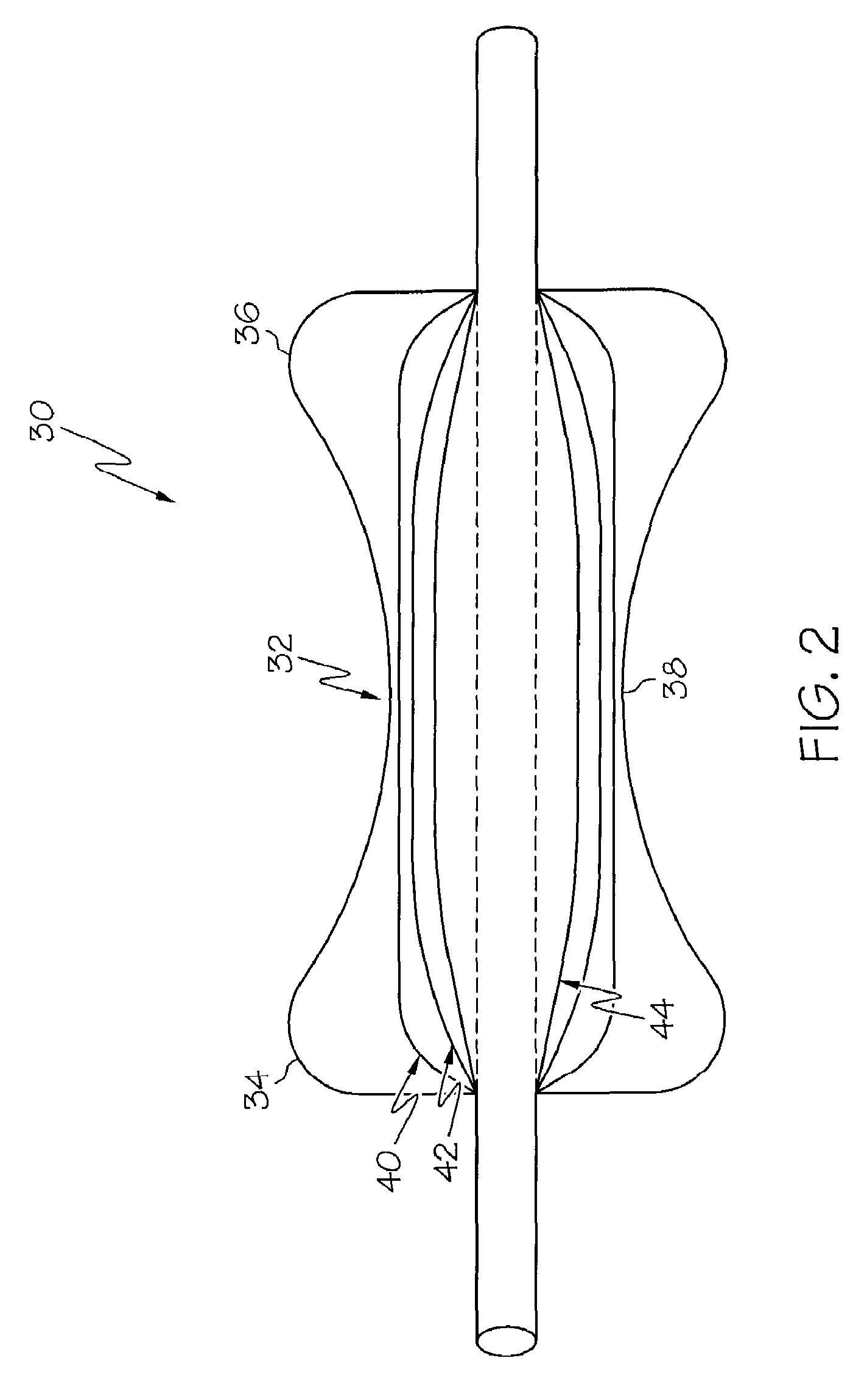Airway balloon dilator
a balloon dilator and airway technology, applied in balloon catheters, other medical devices, surgery, etc., can solve the problems of tracheal stenosis, prior intubation, and one of the most challenging problems of head and neck surgeons, so as to quickly restore laryngeal, tracheal or bronchial luminal patency, and avoid excessive trauma to patients. , the effect of quick re-establishmen
- Summary
- Abstract
- Description
- Claims
- Application Information
AI Technical Summary
Benefits of technology
Problems solved by technology
Method used
Image
Examples
Embodiment Construction
[0019]As illustrated in FIG. 1, one embodiment of the present invention is an apparatus 10 for performing an airway balloon dilation procedure at the site of a stenosis in the airway of a patient, the apparatus comprising an inflatable outer balloon 12 which has an external surface 14. The apparatus also comprises a central axis 16, a hollow core 18, and at least one inflatable inner balloon 20 adapted to inflate inside the outer balloon 12. The apparatus 10 is typically insertable into the airway of a patient for movement of the balloons 12, 20 between a deflated configuration and an inflated configuration. Further, the inner balloon 20 is designed to inflate inside the outer balloon 12 yet separately from the outer balloon, adding the ability of the apparatus to produce high dilation pressures without balloon rupture.
[0020]As shown in FIG. 1, the hollow core 18 traverses the entire apparatus 10. Typically the hollow core connects via a proximal ISO connector to an oxygen source su...
PUM
 Login to View More
Login to View More Abstract
Description
Claims
Application Information
 Login to View More
Login to View More - R&D
- Intellectual Property
- Life Sciences
- Materials
- Tech Scout
- Unparalleled Data Quality
- Higher Quality Content
- 60% Fewer Hallucinations
Browse by: Latest US Patents, China's latest patents, Technical Efficacy Thesaurus, Application Domain, Technology Topic, Popular Technical Reports.
© 2025 PatSnap. All rights reserved.Legal|Privacy policy|Modern Slavery Act Transparency Statement|Sitemap|About US| Contact US: help@patsnap.com



